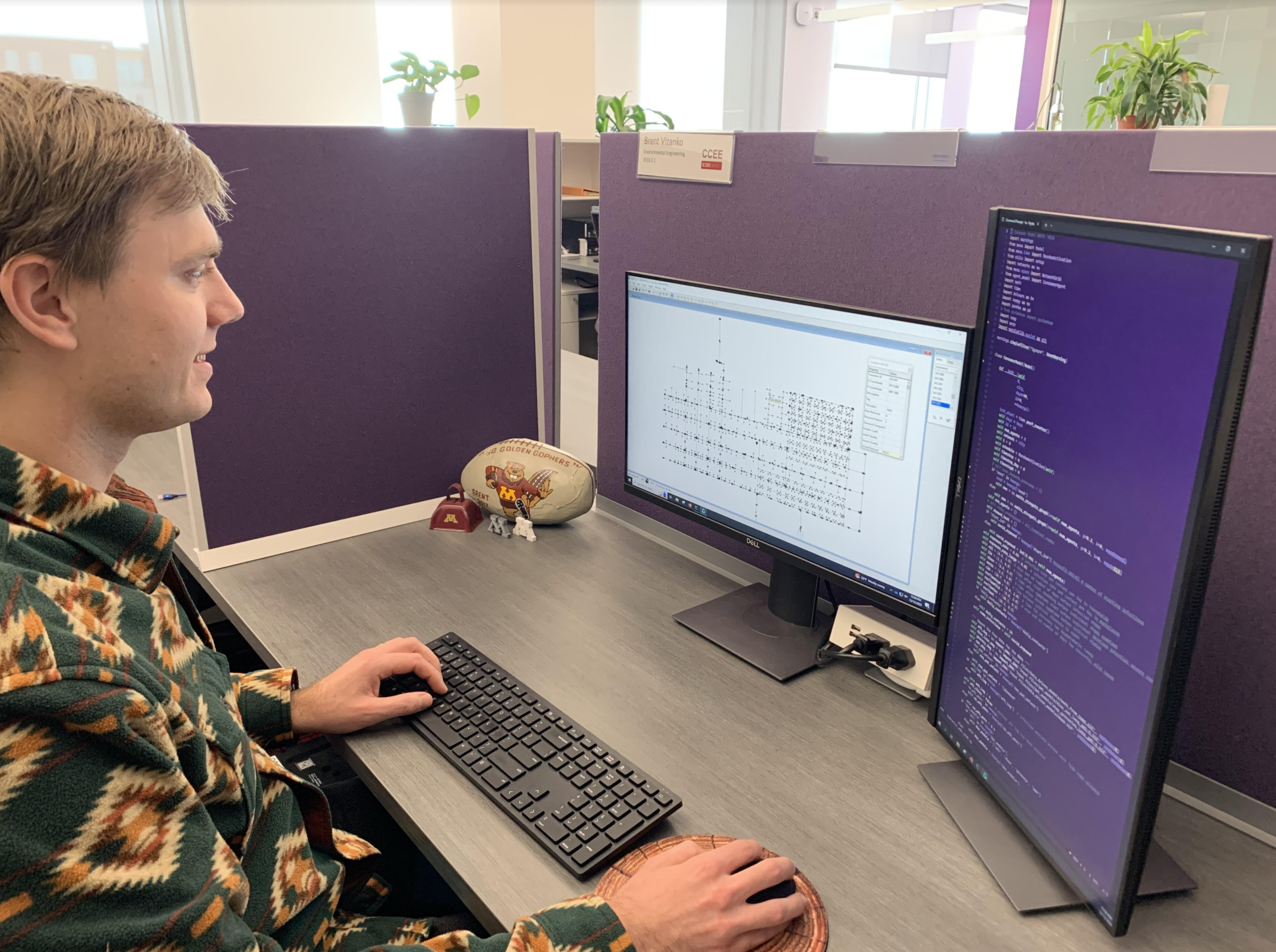During the pandemic, water utilities relied on emergency planning that was in place, but they were not prepared to cope with new needs while maintaining critical infrastructure. Across the world, utilities implemented staggered shifts to allow social distancing, improved information and communication technology and smart systems to support working from home, and boosted chlorine doses to mitigate stagnated water in pipe systems. CCEE researchers developed a model to plan responses and improve water quality for unexpected shifts in water demands that are associated with pandemics, other hazards, and changes in infrastructure and technology.
Professor Emily Berglund and Avi Ostfeld (Technion – Israel Institute of Technology) obtained funding from the U.S.-Israel Bi-National Science Foundation to develop new tools that utility managers can use to respond to pandemics and other hazards. This research grew out of interactions with professors, students and practitioners who research water resources, including a forum that reported the ways that water systems were affected by the pandemic, from cleaner surface water systems to increased residential demands. The researchers used a public dataset reporting the results of a survey that was conducted in April 2020 across 11 countries that tested risk perceptions and social distancing behaviors during the pandemic.

Ph.D. student Brent Vizanko analyzed the dataset to train statistical models that predict protective behaviors such as eating out less, working from home, washing hands more often and wearing a face mask. This research found that trust in information sources, such as scientists and government, and having friends and family sick with COVID-19 were important predictors for protective behaviors.
“We were able to realistically model behaviors by using survey data collected during the first couple of weeks of the pandemic,” Vizanko said. “This helped us understand how people were making decisions to social distance, and we were able to use this data to build a predictive model.”
The team developed models to predict how residential water demands changed due to people working from home, using hourly water demand data from a collaborating city in California. Analysis conducted by Ph.D. students Faisal Alghamdi and Jorge Pesantez demonstrated that households changed the way they used water as people bathed, cooked, and used washing machines and dishwashers during what would be typical working hours. Finally, models that capture social distancing behaviors, changes in demands and disease transmission were applied in an integrated modeling framework to simulate how demands changed as coronavirus infections spread in a community.
“Integrating a set of very different models into a comprehensive framework was challenging and rewarding,” Vizanko said. “Each model represents one facet of reality, and when we combined the models, we could see the whole picture from disease transmission to water flows in a network.”
A pipe network model was applied, and researchers found that during periods of working from home, households near industrial areas were exposed to stagnated water that spent more than twice the travel time in pipes, when compared with water used at households far from industrial areas. Stagnated water poses health risks due to the growth of microbial contaminants, and these results point toward problems of inequity, as homes near industrial areas are often low-income and may not be able to afford bottled water. The modeling framework can be used by utilities for future planning and response.
“The COVID-19 pandemic has shaped our lives in so many ways, and unfortunately, marginalized communities have felt a greater impact,” Vizanko said. “I hope this research can help alleviate the inequitable burden these types of disasters cause.”
A paper based on this research, “Social distancing, water demand changes, and quality of drinking water during the COVID-19 pandemic,” was published in Sustainable Cities and Society.
